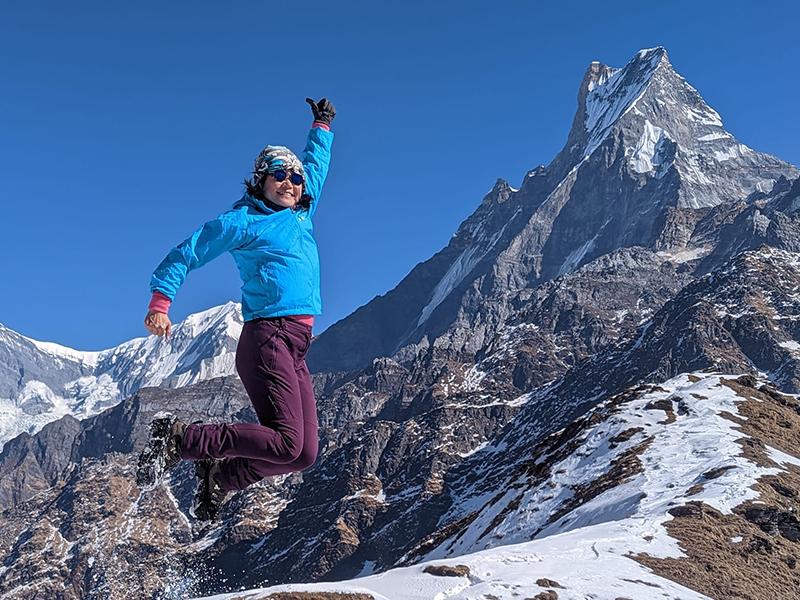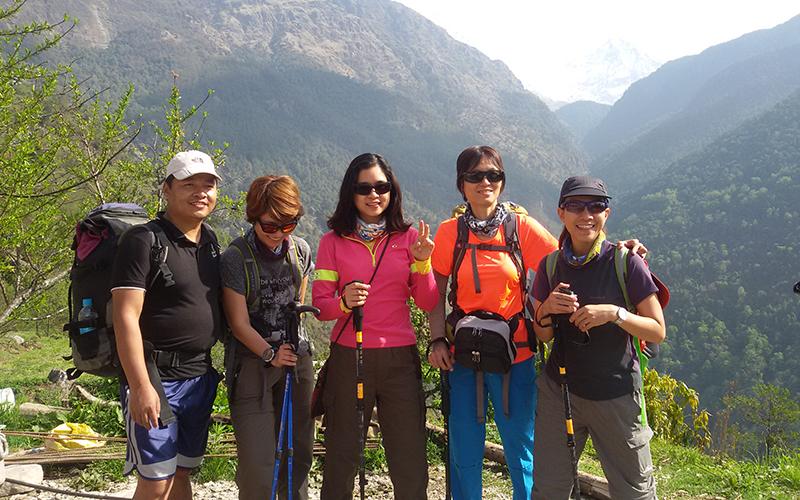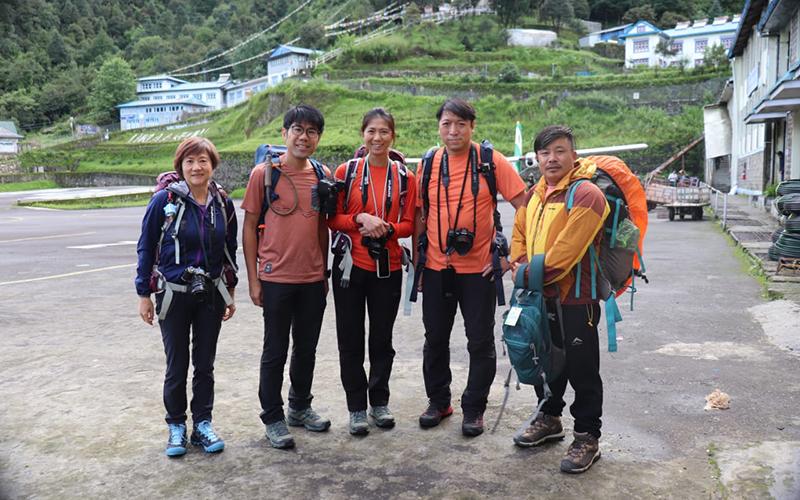Lobuche Peak Climbing Guide

Lobuche Peak Climbing: Experience the Beauty of the Himalayas Like Never Before
Have you ever dreamed of standing on top of the world, surrounded by the majestic peaks of the Himalayas? If so, then Lobuche Peak Climbing is an adventure that you simply cannot miss. Located in the Khumbu region of Nepal, Lobuche Peak is one of the most popular trekking peaks in the Everest region, offering a challenging yet rewarding climb that will take you through stunning landscapes and breathtaking views of the surrounding mountains. From the picturesque Sherpa villages to the rugged terrain and snow-capped peaks, Lobuche Peak Climbing is a journey of a lifetime that will immerse you in the beauty of the Himalayas like never before. So, pack your bags, lace up your boots, and get ready for an unforgettable adventure that will leave you with memories to last a lifetime.
The Beauty of the Himalayas
The Himalayas are one of the most beautiful natural wonders of the world, with towering peaks, snow-capped mountains, and breathtaking landscapes that are unmatched anywhere else on earth. The beauty of the Himalayas is truly awe-inspiring, with the sheer size and majesty of the mountains leaving visitors breathless and in awe of their magnificence.
The Khumbu region of Nepal is home to some of the most spectacular peaks in the Himalayas, including Mount Everest, the highest mountain in the world. The region is also known for its stunning glaciers, beautiful forests, and picturesque Sherpa villages, which make it a popular destination for trekkers and climbers from all over the world.
Lobuche Peak is one of the most popular trekking peaks in the Khumbu region, offering climbers the chance to experience the beauty of the Himalayas up close and personal. The climb is challenging, but the rewards are well worth the effort, with stunning views and unforgettable memories waiting at the summit.
Preparing for Lobuche Peak Climbing
Before embarking on your Lobuche Peak Climbing adventure, it is important to make sure that you are physically and mentally prepared for the challenge. Climbing a peak like Lobuche requires a high level of fitness and endurance, as well as a strong mental attitude to overcome the physical and mental challenges of the climb.
One of the best ways to prepare for Lobuche Peak Climbing is to undertake a training program that focuses on building your endurance, strength, and mental toughness. This may involve a combination of cardio and strength training, as well as altitude training to help your body acclimate to the high altitude conditions of the climb.
It is also important to make sure that you have the right gear and equipment for the climb, including appropriate clothing, footwear, and climbing equipment such as crampons and ice axes. You should also make sure that you have the necessary permits and fees in order to climb Lobuche Peak, as well as a clear understanding of the route and difficulty level of the climb.
Required Permits and Fees
In order to climb Lobuche Peak, you will need to obtain a climbing permit from the Nepal Mountaineering Association (NMA). The cost of the permit varies depending on the season and the number of climbers in your group, but typically ranges from $250 to $500 USD per person.
In addition to the climbing permit, you will also need to obtain a trekking permit for the Khumbu region, which will allow you to access the trailhead for the climb. The cost of the trekking permit is around $30 USD per person and is valid for 30 days.
It is important to note that you should always climb with a licensed and experienced guide, who will be able to help you navigate the climb safely and efficiently. Your guide will also be able to assist you with obtaining the necessary permits and fees, as well as ensuring that you have all of the necessary gear and equipment for the climb.
Best Time to Climb Lobuche Peak
The best time to climb Lobuche Peak is during the spring and autumn seasons, which run from March to May and September to November respectively. These seasons typically offer the best weather conditions for climbing, with clear skies and mild temperatures that are ideal for climbing.
During the spring season, the weather is generally warmer and less windy than during the autumn season, making it a popular choice for climbers. However, the autumn season offers clearer skies and better visibility, which can make for more spectacular views from the summit.
It is important to note that climbing Lobuche Peak during the winter season can be extremely challenging and dangerous, due to the harsh weather conditions and high levels of snow and ice on the mountain.
Route and Difficulty Level of Lobuche Peak Climbing
The route to the summit of Lobuche Peak is considered to be moderately difficult, with a mix of steep ascents, technical climbing, and high-altitude conditions that require a high level of fitness and endurance.
The climb typically begins in the village of Lobuche, where climbers will spend the first few days acclimatizing to the high-altitude conditions. From there, the climb follows a steep and challenging route up the mountain, with sections of technical climbing and steep ascents that require the use of crampons and other climbing equipment.
The climb to the summit of Lobuche Peak typically takes around 10-12 days, depending on the weather conditions and the level of experience of the climbers. It is important to take breaks and rest days along the way in order to allow your body to acclimate to the high altitude conditions and avoid altitude sickness.
Climbing Gear and Equipment
Climbing Lobuche Peak requires a range of specialized gear and equipment, including appropriate clothing, footwear, and climbing gear such as crampons and ice axes. It is important to invest in high-quality gear that is designed specifically for mountain climbing, as this will help to keep you safe and comfortable during the climb.
Some of the essential gear and equipment that you will need for Lobuche Peak Climbing include:
– Mountaineering boots
– Crampons
– Ice axe
– Harness
– Helmet
– Ropes and carabiners
– Down jacket
– Base layers and mid-layers
– Gloves and hat
– Goggles and sunglasses
Accommodations and Meals During the Climb
During the climb, you will stay in a combination of lodges and campsites along the route. The lodges are basic but comfortable, with shared rooms and facilities such as showers and toilets. The campsites are more basic, with tents and sleeping bags provided for climbers.
Meals during the climb typically consist of a mix of traditional Nepali dishes and Western-style cuisine, with plenty of carbohydrates and protein to fuel your climb. It is important to let your guide know if you have any dietary restrictions or allergies so that they can make appropriate arrangements for your meals.
Safety Measures During the Climb
Climbing Lobuche Peak can be a challenging and dangerous activity, and it is important to take appropriate safety measures to minimize your risk of accidents and injuries. Some of the key safety measures that you should take include:
– Climbing with a licensed and experienced guide
– Always wear appropriate safety gear and equipment
– Staying hydrated and well-fed throughout the climb
– Taking appropriate rest breaks and acclimatization periods
– Monitoring weather conditions and adjusting your climb accordingly
– Being aware of your surroundings and potential hazards on the mountain
Tips for a Successful Lobuche Peak Climbing Experience
Climbing Lobuche Peak is a challenging but rewarding experience that requires a high level of physical and mental preparation. To ensure a successful climb, there are a few key tips that you should keep in mind:
– Start training well in advance of your climb to build your endurance and strength
– Invest in high-quality gear and equipment that is designed specifically for mountain climbing
– Work with a licensed and experienced guide who can help you navigate the climb safely and efficiently
– Take appropriate rest breaks and acclimatization periods to avoid altitude sickness
– Stay hydrated and well-fed throughout the climb to maintain your energy levels
– Monitor weather conditions and adjust your climb accordingly
– Be prepared for the physical and mental challenges of the climb, and maintain a positive attitude throughout the journey







